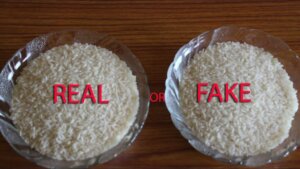How to Identify Plastic Rice: A Simple Guide

1. Water Test: One of the quickest ways to check for the authenticity of rice is the water test. Simply take a tablespoon of your rice and drop it into a glass of cold water. Genuine rice will sink to the bottom, whereas rice with plastic components will float. This is because plastic is less dense than water.
3. Mold Test: Natural rice, when left in a moist environment, will develop mold within a couple of days. You can test this by boiling some rice, placing it in a container, and leaving it in a warm place. After a few days, check for any signs of mold or fermentation. If there are none, you might want to scrutinize the rice further.
4. Hot Oil Test: Drop a few grains of rice into very hot oil. The natural rice grain will start to cook and might pop a bit, similar to popcorn. If the grain is plastic, it will melt and form a sticky layer at the bottom of the pan.
5. Boiling Test: As you cook the rice, observe the water. If you see a thick layer of residue forming on top of the water, this might indicate the presence of plastics. Normal rice will just become starchy, but it shouldn’t leave any unusual residue.
6. Mortar and Pestle Test: Finally, crush a few grains of rice with a mortar and pestle. Natural rice will turn into a fine powder, but plastic grains will not crush in the same way and may leave a noticeable residue that feels different from organic rice powder.
